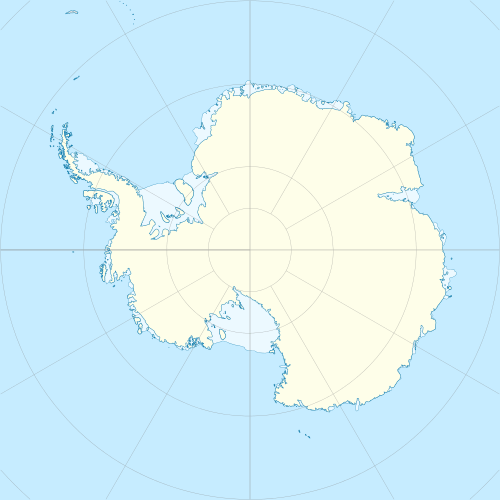Avian Island
 Avian Island Location in Antarctica | |
| Geography | |
|---|---|
| Location | Antarctica |
| Coordinates | 67°46′S 68°54′W / 67.767°S 68.900°WCoordinates: 67°46′S 68°54′W / 67.767°S 68.900°W |
| Administration | |
|
None | |
| Demographics | |
| Population | Uninhabited |
| Additional information | |
| Administered under the Antarctic Treaty System | |
Avian Island is an island, 1.2 km (0.7 mi) long and 40 metres (130 ft) high, lying close off the south tip of Adelaide Island, Antarctica. It was discovered by the French Antarctic Expedition, 1908–10, under Jean-Baptiste Charcot, and visited in 1948 by the Falkland Islands Dependencies Survey, who so named it because of the large number and variety of birds (avians) found there.
Birds
The island has been identified as an Important Bird Area by BirdLife International because it supports a large breeding colony of Adélie penguins (35,000 pairs), as well as imperial shags (670 pairs), south polar skuas (880 pairs), southern giant petrels (250 pairs), kelp gulls and Wilson's storm petrels. It also holds the southernmost record of breeding brown skuas.[1] The island is protected as Antarctic Specially Protected Area (ASPA) No.117 for its outstanding ornithological significance.[2]
See also
References
- ↑ "Avian Island". BirdLife data zone: Important Bird Areas. BirdLife International. 2012. Archived from the original on 2007-07-10. Retrieved 2012-12-09.
- ↑ "Avian Island, Marguerite Bay, Antarctic Peninsula" (PDF). Management Plan for Antarctic Specially Protected Area No. 117: Measure 1. Antarctic Treaty Secretariat. 2002. Retrieved 2013-06-12.
![]() This article incorporates public domain material from the United States Geological Survey document "Avian Island" (content from the Geographic Names Information System).
This article incorporates public domain material from the United States Geological Survey document "Avian Island" (content from the Geographic Names Information System).